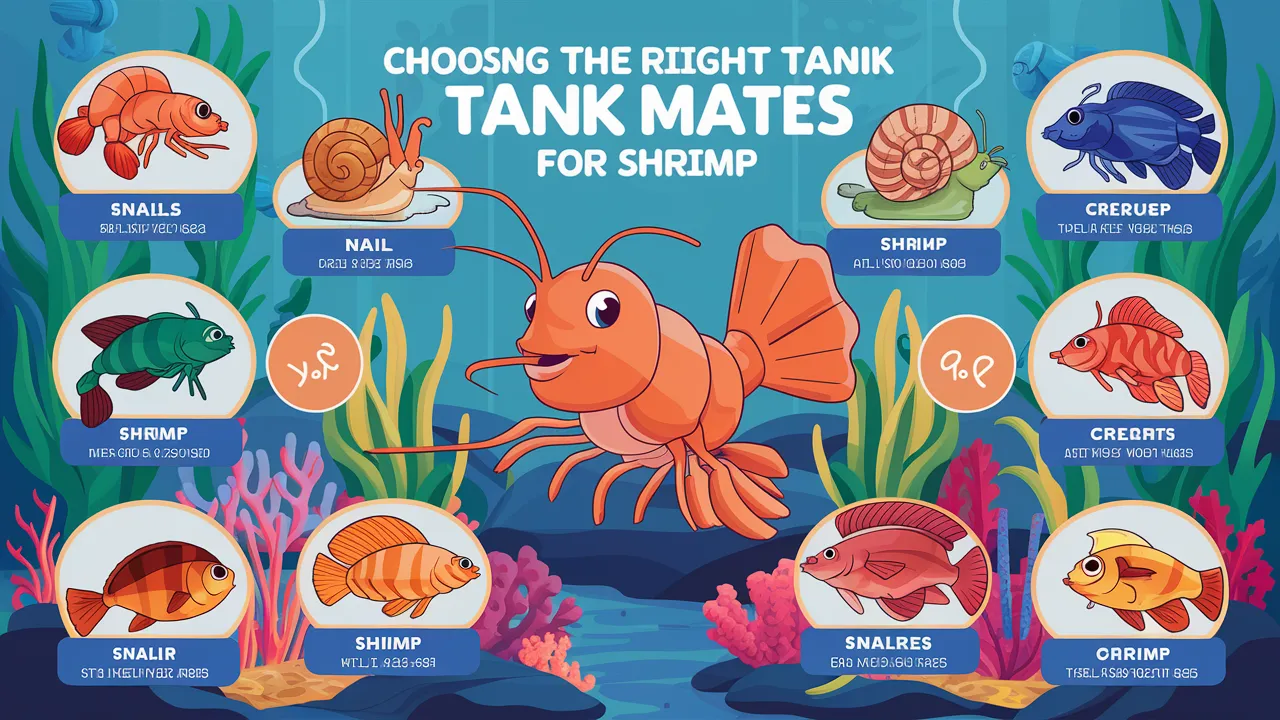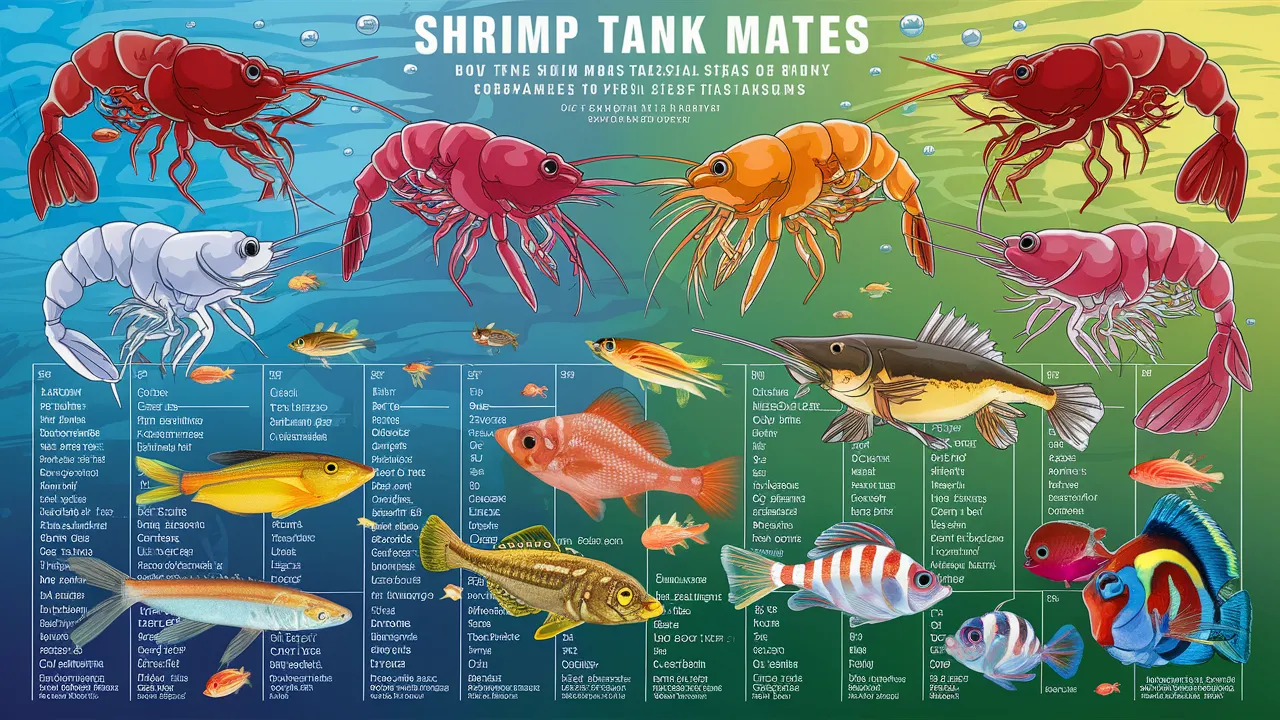Did you know that choosing the right Shrimp Tank Mates is crucial for their well-being and the overall success of your aquarium ecosystem? This Betta Fish Guide will delve into the world of shrimp tank mates, exploring the best choices, compatibility considerations, and essential tips for creating a thriving shrimp community.
What are Shrimp Tank Mates?
Shrimp tank mates are fish, invertebrates, and other aquatic creatures that can coexist peacefully and harmoniously with shrimp in a shared aquarium environment. They can add diversity, visual appeal, and even help maintain a healthy ecosystem by contributing to biofiltration and waste management.
Why are Shrimp Tank Mates Important?
Choosing the right tank mates is essential for several reasons:
- Safety: Some fish and invertebrates are known to prey on shrimp, while others may be too aggressive or territorial.
- Compatibility: Shrimp require specific water parameters and environmental conditions that must be compatible with their tank mates.
- Ecosystem Balance: The right tank mates can help maintain a healthy ecosystem by consuming algae, providing biofiltration, and contributing to a diverse and vibrant community.
Understanding Shrimp Tank Mate Compatibility
When selecting tank mates for your shrimp, it’s crucial to consider several factors:
- Size: Shrimp are generally small, so it’s essential to choose tank mates that won’t accidentally harm them.
- Temperament: Avoid aggressive or territorial fish that might harass or injure your shrimp.
- Water Parameters: Ensure that the tank mates have similar water parameter requirements, including temperature, pH, and hardness.
- Diet: Some tank mates may compete with shrimp for food, so it’s important to consider their dietary needs.

Ideal Shrimp Tank Mates
When selecting companions for your shrimp, consider species that are peaceful, small to medium-sized, and won’t view your shrimp as a potential meal. Here are some excellent options:
Small Schooling Fish
Small, peaceful schooling fish can add movement and color to your shrimp tank while posing minimal threat to adult shrimp. Some popular choices include:
- Neon Tetras (Paracheirodon innesi)
- Ember Tetras (Hyphessobrycon amandae)
- Celestial Pearl Danios (Danio margaritatus)
- Chili Rasboras (Boraras brigittae)
These species not only coexist peacefully with shrimp but also create a stunning visual display when swimming in schools.
Bottom-Dwelling Fish
Certain bottom-dwelling fish can share the substrate with shrimp without causing issues:
- Corydoras Catfish (various species)
- Otocinclus Catfish (Otocinclus sp.)
- Pygmy Corydoras (Corydoras pygmaeus)
These fish often have similar dietary habits to shrimp, helping to keep the tank clean without competing for resources.
Snails
Snails can be excellent tank mates for shrimp, as they occupy different niches in the aquarium:
- Nerite Snails (Neritina sp.)
- Malaysian Trumpet Snails (Melanoides tuberculata)
- Ramshorn Snails (Planorbidae family)
Snails contribute to the cleaning crew and add interesting behaviors and patterns to your tank.
Other Shrimp Species
In many cases, different species of shrimp can coexist harmoniously:
- Amano Shrimp (Caridina multidentata)
- Ghost Shrimp (Palaemonetes sp.)
- Bamboo Shrimp (Atyopsis moluccensis)
Mixing shrimp species can create a diverse and fascinating community of invertebrates.

Tank Mates to Avoid
While many species can coexist with shrimp, some should be avoided due to their predatory nature or aggressive behavior:
- Larger Cichlids (e.g., Angelfish, Discus)
- Bettas (Betta splendens)
- Gourami species
- Larger Tetras (e.g., Buenos Aires Tetras)
- Crayfish
- Most Loaches
These species may view shrimp as prey or outcompete them for resources, leading to stress and potential loss of your shrimp population.
Creating the Ideal Shrimp Community Tank
Now that we’ve explored potential tank mates, let’s discuss how to create the perfect environment for your shrimp and their companions.
Tank Size and Setup
A larger tank provides more stability and space for different species to coexist. For a shrimp community tank, consider:
- Minimum tank size: 20 gallons (75 liters)
- Plenty of hiding places (plants, driftwood, rocks)
- Fine substrate for foraging
- Gentle filtration to avoid sucking up shrimplets
Planting for Success
A well-planted tank benefits both shrimp and their tank mates. Consider these aquatic plants:
- Java Moss (Taxiphyllum barbieri)
- Anubias species
- Cryptocoryne species
- Hornwort (Ceratophyllum demersum)
- Java Fern (Microsorum pteropus)
These plants provide shelter, foraging areas, and help maintain water quality.
Feeding Your Community
Proper nutrition is key to a thriving shrimp community. Offer a variety of foods:
- High-quality shrimp-specific pellets
- Blanched vegetables (spinach, zucchini)
- Algae wafers
- Leaf litter (Indian Almond leaves, Oak leaves)
Ensure that all inhabitants have access to appropriate food sources to prevent competition.
Conclusion
Creating a harmonious community tank with shrimp and compatible tank mates is a rewarding experience that showcases the beauty of aquatic life. By carefully selecting appropriate companions, providing a suitable environment, and maintaining optimal water conditions, you can create a thriving ecosystem that’s both visually stunning and ecologically balanced.
Remember, every tank is unique, and what works for one aquarist may not work for another. Don’t be afraid to experiment (cautiously) and learn from your experiences. With patience, observation, and care, you’ll soon have a vibrant shrimp community that brings joy and fascination to your home.

Related Posts
Are Betta Fish Nocturnal? Mystery of Betta Sleep Patterns
Are Fish Omnivores? A Look at Fish Feeding Habits
The Most Expensive Betta Fish: A Guide To Rare & Varieties